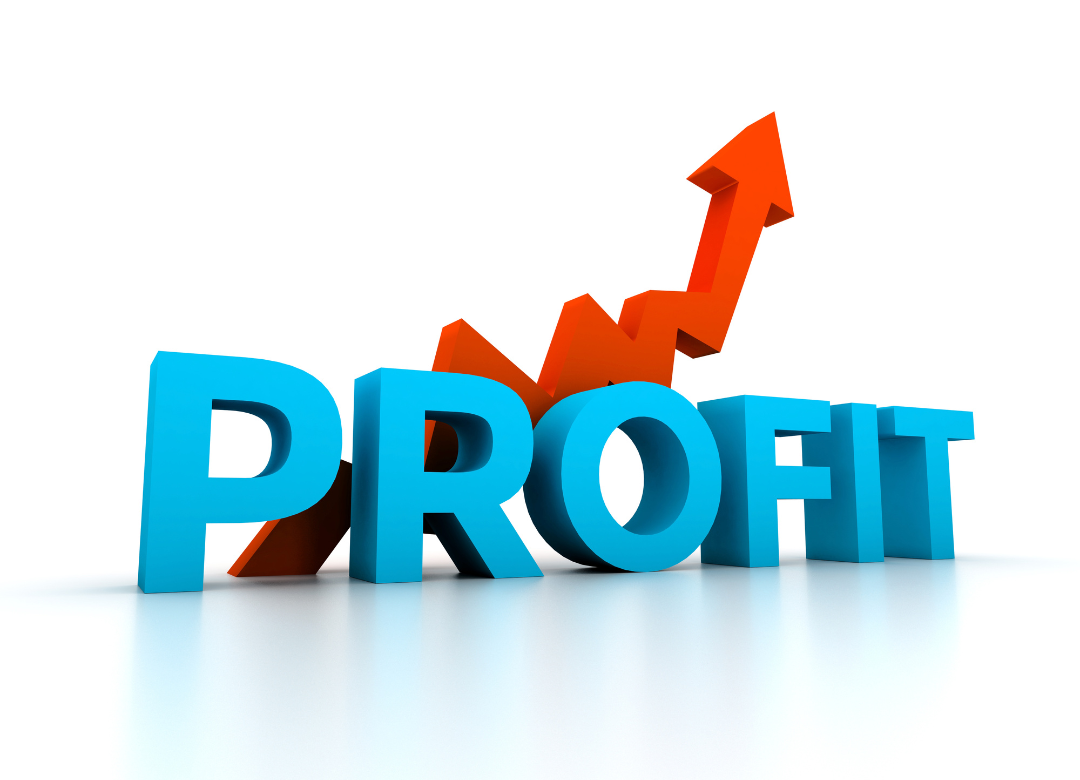Net Profit Margin Formula: How to Calculate Maximum Profitability
Every business has a goal of making a profit, and you need to know what the net profit margin formula is to ensure your business is making a profit. You're probably quite familiar with the fact that one of the key objectives of any company is to make a profit. But the question is: how do you know when you're really making one?
That's where knowing the net profit margin formula comes in. Essentially, this formula calculates the percentage of revenue that turns into profit after all expenses are accounted for. By understanding this metric, you have an accurate measure of your company's financial performance and can make informed decisions to sustain or improve it. After all, the purpose of any business is not just to keep its doors open, but to thrive and grow.
A business cannot survive without profit, and that's the hard truth. Profit is what allows a business to not only stay afloat but also to grow and expand. It's the foundation that enables you to pay your employees, rent, utilities, and other expenses.
Without profit, a business will eventually run itself into the ground. That's why it's crucially important that you monitor your financials closely and make necessary adjustments quickly.
It's also crucial to keep in mind that profitability isn't just about cutting costs, but also about increasing revenue. As you focus on growing your business, profitability should always be front and center in your mind.
As a business owner, it is essential to calculate how much profit your business needs to earn to meet its financial goals. If you are not clear on your financial goals for your business, it’s time to assess and plan out your business goals and objectives. It’s critical to have clarity around that so you know where you want to take your business.
Now it’s time to build out a plan. Creating a plan is one of the most crucial steps toward achieving your financial goals for your business. It’s not enough to simply establish what you want to accomplish - putting it down on paper and creating a roadmap to get there is essential.
Without a plan, you risk getting lost in the daily ins and outs of running your business and losing sight of your long-term objectives. A solid business financial plan helps you stay focused, track your progress, and adjust your course as needed. It’s the guide that keeps you on track toward success. So don’t underestimate the power of a well-crafted plan - it’s the key to turning your financial goals into a reality.
Therefore, it’s critical to know the net profit margin formula. Understanding the net profit margin formula is a crucial step toward establishing the financial stability of a business. Not only does this formula enable proper analysis of profit margins, but also helps in making informed decisions about pricing strategies.
As a business owner, you need to know how much profit you want to make, which can easily be calculated using the net profit margin formula. By incorporating this formula in your financial planning, you can make informed decisions about how to price your products and services, set sales targets, and allocate resources effectively.
As a result, mastering the target profit formula is a vital skill and can lead to greater financial stability and success in your business.
Let’s walk you through the net profit margin formula, how to calculate it, and how it can help you make better financial decisions:
1. Understanding the net profit margin formula
Target profit is the amount of revenue that a business must earn to cover all of its costs and expenses and earn the desired profit. It is the minimum number of sales a business must make in each period to reach its financial goals.
The formula for net profit margin formula is as follows:
Target Profit = (Total Fixed Costs + Total Variable Costs + Desired Profit) / Unit Sales
Total fixed costs are the expenses that do not change with the level of production, such as rent, salaries, and insurance. Total variable costs are the expenses that vary with the level of production, such as raw materials and labour costs. Desired profit is the profit that a business wants to make in a given period, such as a month or a year. Unit sales refer to the number of products or services that a business must sell to earn a profit.

2. Applying the net profit margin formula
The target net profit margin formula can be applied in many ways to help make better financial decisions. For example, it can be used to determine the minimum sales volume required to break even, the price that a business must charge for its products or services to earn a profit, and the level of production that a business must reach to meet its financial goals.
By knowing the target net profit, businesses can also set realistic sales targets and adjust their pricing strategy accordingly. You rely on sales to bring in revenue and ultimately, profit. By setting a target profit, you can better understand how much revenue you need to generate and how to adjust your pricing strategy to meet that goal.
It's important to keep your sales targets realistic, as setting them too high can leave you feeling discouraged and overwhelmed. By knowing your target profit, you can create a roadmap for success and ensure your business is moving in the right direction.
3. Limitations of the net profit margin formula
While the net profit margin formula is a useful tool for making financial decisions, there are limitations to its application. For example, it assumes that all products or services sold will be at the same price, which may not be the case in reality. It also assumes that all costs and expenses are known and fixed, which may not be the case in dynamic market environments with various changing influencing factors such as inflation, supply chain challenges, oil price fluctuations, etc.
The 3 profit drivers I monitor ALWAYS
When calculating the net profit margin formula, I like to look at the business holistically, starting with setting a profitable price, then moving down to sales volume analysis then expenses.
Typically, when clients come to see me feeling that they aren’t making enough money in their business. So when I start an analysis of the business numbers, I first start with price. If you have not set profitable prices in your business, that is a red flag, and you are setting your business up for failure.
It's crucial to remember that price is not just a number; it's a reflection of how much value you place on your product or service. Setting the right price can be the difference between success and failure. If you're not sure whether your prices are profitable, this is definitely a red flag and needs to be addressed immediately. Don't let poor pricing be the downfall of your business.
Are you tired of struggling to price your products or services in a way that maximizes profit? If so, look no further than our free Path to Profitability masterclass. In this class you'll learn all about the latest profit strategies and techniques used by successful businesses to boost their bottom line. Be sure to sign up today.

If pricing is in check, then the next step is to analyze the sales volume. Are you selling enough units to break even? Do you know how much you must sell to break even? And how much do you need to sell to hit your target profit margins?
The sales volume is equally important to ensure that the business is sustainable. You must analyze how many units you are selling and determine if it is enough to break even. Breakeven sales volume is an important milestone that each business must achieve to survive.
Imagine this; you have set a profit target for your business, but are you selling enough to hit that target? Knowing how much you need to sell to achieve your profit margin is crucial to keep your business afloat. A successful business owner must always keep an eye on sales volume and set realistic goals to achieve financial success.
Then you would look at expenses. Is there a way to decrease expenses in your business? Every business owner wants to increase their profits and decrease their expenses.
The first step in achieving this is to analyze your expenses closely. Are there any areas where you could cut costs? Perhaps you could negotiate a better deal with your suppliers or switch to a cheaper service provider. Maybe you could reduce your office space or utility bills by implementing energy-saving measures.
Whatever steps you take, reducing your expenses will not only benefit your bottom line but will also make your business leaner and more efficient in the long run. So, take the time to review your expenses regularly and find ways to cut back without compromising on quality.
To recap, these are the three profit drivers that you need to pay attention to for a target profit formula: price, sales volume, and expenses.
The bottom line is that calculating target profit is essential for better financial decision-making as it provides insight into how much revenue a business needs to make to cover expenses and earn a desired profit. However, it is important to consider the limitations of the formula and be aware of other related concepts like Target margin to make more informed financial decisions. By using the Target Profit formula and other related financial tools, business owners can make smarter decisions, meet their financial targets, and achieve long-term success.
Are you tired of seeing your business struggle to make a profit? Understanding the profit drivers that can impact your success is crucial, but it can be overwhelming to figure it all out on your own.
That's where the Path to Profitability masterclass comes in. This free masterclass will provide you with the knowledge and tools needed to monitor the key profit drivers in your business, empowering you to make informed decisions and take your profitability to the next level.
Don't miss this opportunity to invest in your business's potential for success. Register today and take the first step toward a more profitable future!


